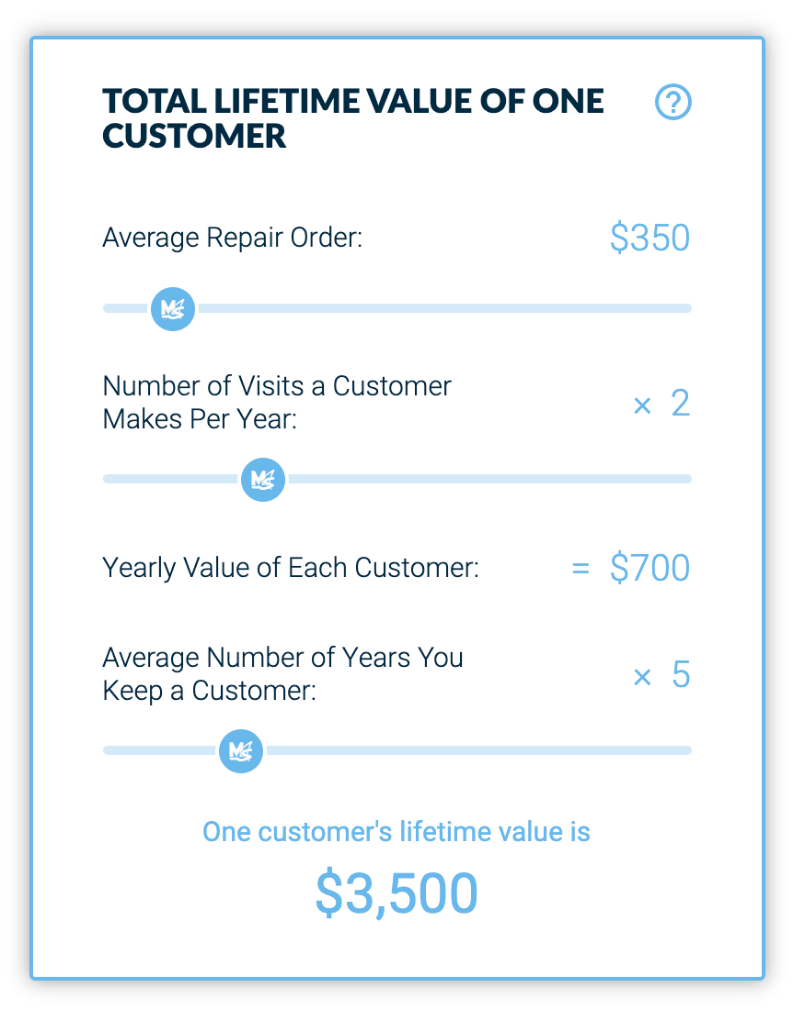-
Direct Mail – How To Avoid The Bottom Feeders

AUTO REPAIR SHOPS & “THE BOTTOM FEEDER” CUSTOMER
I have the opportunity to speak with auto repair shop owners across the country about how direct mail can play an important role in their shop’s multi-channel marketing strategy. One statement that I consistently hear from most of these owners is, “I don’t want the bottom feeders.”
Primarily, “The bottom feeders are the customers that don’t see the value in the quality of your work at a fair price” and will only come to get their vehicle serviced when they have a coupon.
Because of this, shop owners are hesitant about offering coupons, specials, or discounts to attract new customers. They feel it will attract the wrong type of customer, the “bottom feeders.”
Below, we will look at the typical strategy used to avoid the “bottom feeders” and why it is a flawed one; we will see why coupons are not the actual problem; and, finally, we will address the best way to keep the “bottom feeders” away.
The Typical Strategy Used to Avoid the “Bottom Feeders”
The typical strategy implemented to avoid attracting the “bottom feeders” is to target prospective customers that have higher incomes,
the reason being that consumers who earn more money spend more money to repair and maintain their vehicles. This is echoed by many of our auto shop clients, as well as some of the latest consumer market research provided in Mintel’s 2019 Auto Service, Maintenance and Repair Industry Report, as illustrated below.
However, the biggest flaw with this strategy is it assumes a prospect with a higher income level who won’t have a “bottom feeder” mentality. Unfortunately, this assumption is quite wrong.
Only using services with a coupon or haggling has more to do with a customer’s mentality and decision-making process than it does with their level of income.
Therefore, targeting higher-income prospects is not a sound solution to avoid the “bottom feeders.”
That said, the strategy of targeting prospects with a higher income is still the recommended strategy for most shops. Since we cannot preclude “bottom feeders” from reacting to marketing, you will at least want to target new prospects who are more apt to get their vehicles serviced and maintained more frequently based on their income level.
Why You Should Use Coupons to Attract New Customers
Most shop owners see the value of offering a reasonable discount to attract a new customer to their shop. This is because these shop owners understand the true lifetime value (LTV) of their customers as opposed to valuing them solely on the basis of the amount they may spend on their first repair order.
For example, if a shop has an average repair order of $350, and each of their customers come into their shop two times per year and remain a customer for five years, their actual value, or lifetime value, is $3,500.
This number doesn’t even account for the additional potential revenue that many of these clients will generate from their other family vehicles, as well as any other referrals they have made to their neighbors, friends, and colleagues.

Having a full grasp on your shop’s customer LTV will help you make strategic fact-based decisions about your marketing, including:
- How much is an acceptable amount to offer as a discount?
- How much should you spend to acquire a new customer?
- What marketing efforts are paying off?
- Are you generating an acceptable ROI?
The Wealthy Use Coupons
Ironically, individuals with higher incomes may also be likelier to use a coupon than those with lower incomes, based on numerous case studies and research. One such study conducted by the University of Arizona found that wealthier shoppers tend to use coupons more frequently than those who are not as well off. This, of course, contradicts many longstanding beliefs on the topic.
CNBC’s article, “5 millionaires and billionaires who still use coupons,” and a Money Talk News article entitled, “10 rich and famous people who use coupons,” have also documented a number of extremely wealthy individuals and why they still use coupons. I’m sure you would be ecstatic if any of the below mentioned, were a potential customer at your shop. Here are just a few examples.
Warren Buffett and Bill Gates


Even the world’s richest men have been spotted using coupons.In Bill and Melinda Gates’ 2017 annual letter, Bill recalls when Buffett took him out for a particularly economical lunch years ago: “Remember the laugh we had when we traveled together to Hong Kong and decided to get lunch at McDonald’s? You offered to pay, dug into your pocket, and pulled out . . . coupons!”
Carmelo Anthony

“I go to the supermarket, make sure I get the newspaper and tear the coupons out, save a dollar or two,” said Anthony, who is worth about $90 million. “I’m human, too.”Tim Hasselbeck

When the ladies of The View discussed the topic of men who use coupons on dates, then-co-host Elisabeth Hasselbeck spoke up for her husband, retired National Football League quarterback Tim Hasselbeck:“I married a coupon guy. In the long term, he is so on top of things. He’s very aware of what things cost and what it means to our situation, and I thank him for that.”
Hilary Swank

Movie star Hilary Swank told Regis Philbin and Kelly Ripa on what was then Live with Regis and Kelly that using coupons is in her blood:“When you open up the paper and see those coupons, it looks like dollar bills staring you in the face. . . . It’s how I grew up, and why not?”
Of course, this is not to say these wealthier consumers are “the bottom feeders.” They may just be like many financially-conscious consumers who look to save when they can. The bottom line is coupons, or special offers, are frequently the catalyst for a new customer first-time visit to your shop.
Finally, How Your Shop Can Try to Avoid “The Bottom Feeders”?
The solution to helping avoid “the bottom feeders” is more of a reactive one. As we discussed above, there isn’t anything you can do to stop attracting the “bottom feeders” to your shop for their first visit, whether they use a coupon or redeem a special offer.
However, you can stop the “bottom feeders” from coming back to your shop if they only come back when they have a coupon.
All you must do to accomplish this is remove these new customers, who came in because of your direct-mail marketing, from your future new-acquisition direct-mail campaigns. If you do, they won’t again be receiving the discount used to attract new customers. This process will naturally allow the “bottom feeders” to weed themselves out, as you are not conditioning them to use a coupon on every visit.
Removing your current customers from your new-acquisition direct-mail campaigns is also a best practice for another reason. You don’t want to communicate with new prospective customers the same way you do with your current customers.
One of the primary reasons is that, once you have acquired new customers, you have their names and additional pertinent information about them and their vehicles. This gives you the ability to create and send personalized messages to them. This personalization will increase response rates. According to a survey provided by Epsilon that polled over 1,000 consumers between the ages of 18–64:
“The appeal for personalization is high, with 80% of respondents indicating they are more likely to do business with a company if it offers personalized experiences and 90% indicating that they find personalization appealing.”
I suggest adding these new customers to your current customer acquisition marketing/communication strategy, whether that be email, another targeted direct mail campaign, and/or whatever other marketing channels you are utilizing. They should then receive a different and personalized message containing content or other specific offers that have been developed specifically for customer retention purposes.
To help you better understand and calculate the lifetime value of your customers, as well as to learn about direct mail redemption rates and short-term and long-term direct mail ROI, check out our Authoritative & Comprehensive Guide to Auto Repair Shop’s Direct Mail ROI, and use our ROI calculator to analyze these figures based on your shop’s exact numbers.
Sources
- https://www.cnbc.com/2017/11/10/rich-people-who-still-use-coupons.html
- https://cals.arizona.edu/fcs/node/3148
- https://www.moneytalksnews.com/slideshows/10-rich-and-famous-people-who-use-coupons/
- https://www.marketwatch.com/story/5-ways-you-know-rich-people-are-cheap-2019-01-09
- https://www.businessinsider.com/best-advice-i-can-give-you-about-money-2015-9#4-use-coupons-4
- https://us.epsilon.com/pressroom/new-epsilon-research-indicates-80-of-consumers-are-more-likely-to-make-a-purchase-when-brands-offer-personalized-experiences
Sorry, there were no replies found.
Log in to reply.







